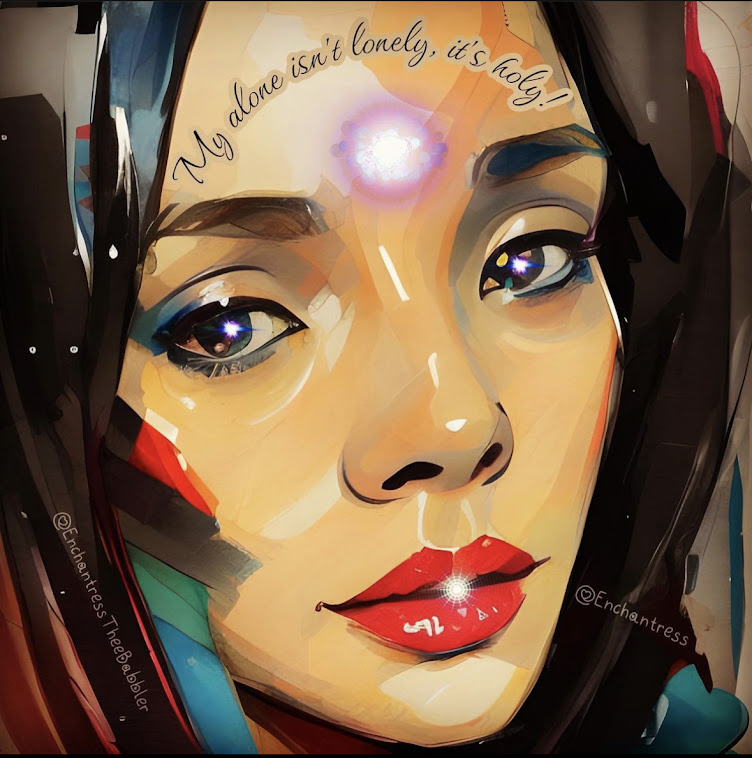Ma'at, Symbol of Order Ma'at, Goddess of Truth, Balance, Order...
Ma'at, unlike Hathor and Nephthys, seemed to be more of a concept than an actual goddess. Her name, literally, meant 'truth' in Egyptian. She was truth, order, balance and justice personified. She was harmony, she was what was right, she was what things should be. It was thought that if Ma'at didn't exist, the universe would become chaos, once again!
For the Egyptian believed that the universe was above everything else an ordered and rational place. It functioned with predictability and regularity; the cycles of the universe always remained constant; in the moral sphere, purity was rewarded and sin was punished. Both morally and physically, the universe was in perfect balance.
Because of Ma'at, the Egyptians knew that the universe, that everything in the universe, worked on a pattern, just as, later on, the Greeks called the underlying order of the universe logos (meaning, order, pattern).
"In the beginning was the logos*, and the logos* was with God and the logos* was God." - John 1:1
* Logos was the 'Word', another name for Jesus.
Egypt, then, was seen to be nothing without Ma'at.
Ma'at was reality, the solid grounding of reality that made the Sun rise, the stars shine, the river flood and mankind think. The universe itself, all the world around them, was sacred in the ancient view. "Ethics" is an issue of human will and human permission. It is a function of the human world of duality. What is "ethical" for one group is sin for another. But Ma'at, the reality that made all groups what they are is transcendent of ethics, just as a rock or a flower is amoral, a-ethical, without "truth or falsehood." How can a flower be "false" or "ethical." It just is. How can the universe be "ethical or moral, right or wrong"? It simply is. That is Ma'at.
Despite being a winged goddess (like Nephthys), she was judge at the Egyptian underworld at the Halls of Ma'ati or Halls of the Double Ma'at.
The dead person's heart was placed on a scale, balanced by Ma'at herself, or by the Feather of Ma'at (her symbol that she wore on her head was an ostrich feather).
Thoth (god of writing and scribes) weighed the heart... if the deceased had been found to not have followed the concept of ma'at during his life (if he had lied or cheated or killed or done anything against ma'at) his heart was devoured by a demon (she was called Ammut - Devouress of the Dead) and he died the final death. If the heart weighed the same as Ma'at, the deceased was allowed to go on to the afterlife.
In life, it was the pharaohs' duty to uphold ma'at. "I have done Ma'at" has been spoken by several pharaohs, as well as being called "beloved of Ma'at".
The ruler who forcibly emphasizes his adherence to Maat on his monuments in Akhenaten the very king whom later pharaohs considered to have deviated immensely from her laws.
Ma'at, as would be logical, was also was the justice meeted out in ancient Egyptial law courts. It is likely that a "Priest of Ma'at" referred to people who were involved in the justice system, as well as being priests of the goddess herself.
There is a small temple dedicated to Ma'at (in ruins) at Karnak. The temple is inside Precinct of Montu, the smallest of three enclosures at Karnak. The temple seems to have been built by Hatshepsut, then reconstructed by Thuthmose III. You can see a computer reconstruction of Ma'at's temple at http://www.ieuropa.com/.
Ma'at did not exist until Ra rose from the waters of Nun (various gods and goddesses of Chaos). She was known as a Neter goddess, and as such, was described as a daughter of Ra. But without Ma'at, Egyptians believed that Nun would reclaim the universe. She was also thought to be the wife of Thoth, moon god and god of the wisdom.
She was, really, the most important deity of them all.
Caroline Seawright is a full time worker, part time traveler, anime and manga lover and HTML programmer! She writes many articles on or about Egypt.
For additional articles and information on Egypt, see her web site.
Read more: http://www.touregypt.net/godsofegypt/maat2.htm#ixzz3GmPKPSWS
|









No comments:
Post a Comment